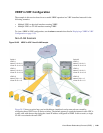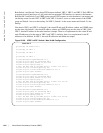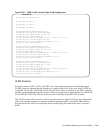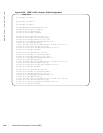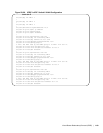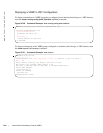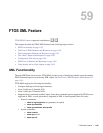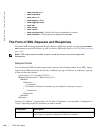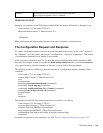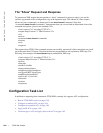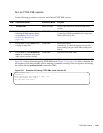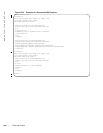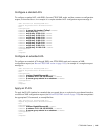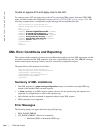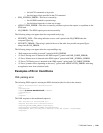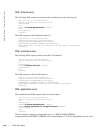
FTOS XML Feature | 1157
Response Format
Similarly, every response from FTOS begins with the XML declaration, followed by a “Response” tag:
<?xml version="1.0" encoding="UTF-8"?>
<Response MajorVersion="1" MinorVersion="0">
::
::
</Response>
What goes between the Response tags depends on the type of response, as discussed next.
The Configuration Request and Response
To create a configuration request, you know from the introduction above that you put “<cli>” in place of
the “<Method>” tag in the schema, and you put “<configuration>” in place of “<Operation>”. The number
of configuration commands in one request is not restricted.
Just as you enter commands in the CLI, you have the option of entering abbreviated commands in XML
messages. For example, instead of using the full
show running-config statement, you can enter show run.
Also, spaces before or after the command are allowed, as shown in the following example.
The following sequence of XML tags shows the structure of a configuration request containing several
commands:
<?xml version="1.0" encoding="UTF-8"?>
<request MajorVersion="1" MinorVersion="0">
<cli>
<configuration>
<command>
ip access standard test2 </command>
<command>
seq 10 deny any</command>
<command>
seq 20 permit host 10.1.1.1 count </command>
<command>
seq 30 deny 10.2.0.0 /16</command>
</configuration>
</cli>
</request>
The response from FTOS, if the command executes successfully, is as follows:
<?xml version="1.0" encoding="UTF-8"?>
<response MajorVersion="1" MinorVersion="0">
<responseType>NO_ERROR</responseType>
<responseSeverity>SEVERITY_INFO</responseSeverity>
<responseMsg>Xml request successfully processed.</responseMsg>
</response>
For details on responses to error conditions, see XML Error Conditions and Reporting on page 1162.
<action> This tag tells the CLI to invoke the EXEC PRIVILEGE mode.
These requests encapsulate “show” commands.



